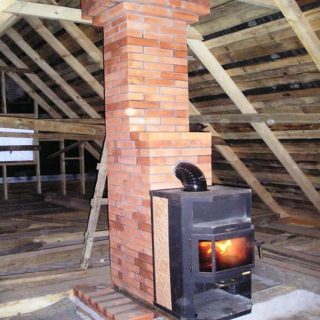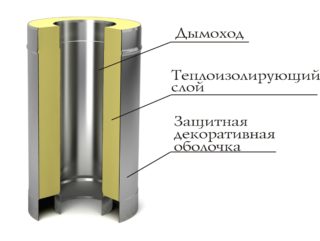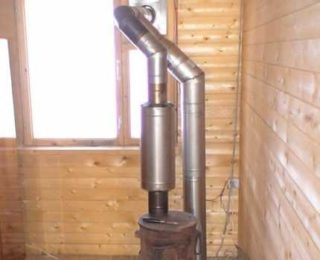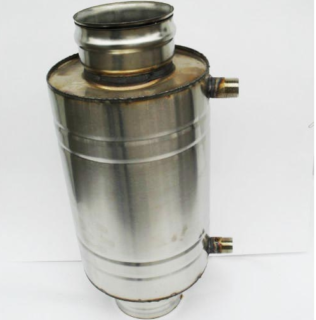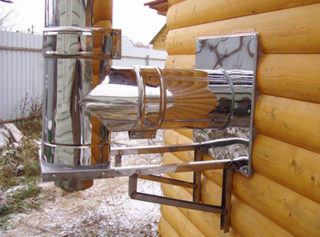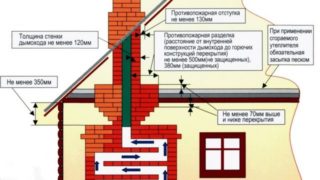Chimneys for a bath stove provide high-quality removal of fuel combustion products from the boiler. The durability and fire safety of the building depend on the correct choice of their device, material and competently executed manufacturing technology. The pipe for the sauna stove needs periodic cleaning. It is necessary to dwell on the design, which will need this procedure as little as possible, and it will be carried out as quickly and simply as possible. A wide range of ready-made chimneys for an oven in a bathhouse is on sale. In order not to get lost in this variety, you need to consider the features of each product, evaluate its pros and cons, rules and installation methods.
What designs are better for a bath
The pipe for the stove in the bath is a structure that is subjected to increased loads based on its purpose and operating conditions. Based on this, special requirements are imposed on the pipe in the bathhouse. Their implementation largely depends on the properties of the material from which the chimneys are made.
Brick
For centuries, brick has been used for the construction of chimneys and is still popular due to its advantages:
- strength;
- reliability;
- average thermal conductivity;
- sustainability;
- durability;
- Fire safety;
- heat resistance;
- heat storage.
Material flaws also exist. To make a good laying, you will need to make an effort and acquire the appropriate skills. The walls of the channel are rough and uneven. Soot settles on them, which gradually blocks the passage, which leads to a decrease in traction until its complete cessation. In addition, we should not forget about the load created by the massive structure.
Chimney sandwich
The design consists of two pipes of different diameters, inserted one into one. The inner section is steel or ceramic; stainless steel is used to make the outer section. Between the walls, stone wool is laid, which has high thermal insulation properties. Between themselves, the runs are docked in the socket, the joints are sealed.
Product Advantages:
- low thermal conductivity;
- fire resistance;
- smooth inner surface on which soot is not collected;
- quick and easy assembly;
- durability;
- durability and stability due to a double circuit.
The only drawback of a chimney sandwich is its high cost. Self-production is fraught with great difficulties due to the complexity of the technology.
Steel pipe chimney
Making a chimney in a bathhouse from an iron pipe is much easier than from bricks, and cheaper than from sections with double walls. For the manufacture of the channel, iron pipes for water supply or cast-iron pipes for sewage, equipped with bells, are used.
The advantages of steel chimneys:
- smooth surface;
- ease of installation;
- strength;
- durability.
Among the disadvantages include the tendency of iron to corrosion. When condensation forms, a caustic mixture of water and creosote is formed, capable of corroding even stainless steel. In addition, the metal is highly heated by gases passing through it. This requires the installation of high-quality thermal insulation to prevent ignition of the roof and adjacent walls. We should not forget that a rusty pipe will not be the best decoration of a sauna.
Types of heat exchanger and its role in bath furnaces
Heat exchangers are designed to heat water with boiler energy and transfer it to the shower room.There are several options for installing a heating system. The decision is determined by their own priorities and the size of the rooms in the bath.
You can choose these installation options:
- In the steam room. Here, the entire volume of water is immediately heated, which is piped to the shower room. To dilute it to the desired temperature, another tank is suspended above the ceiling, providing normal outlet pressure. The disadvantage of such a system is that the useful volume of the steam room is reduced.
- In the shower room. This design is good in that it practically does not infringe on the usable area of the premises. The downside is that it is necessary to produce a complex piping system.
- In the attic. This is convenient, since the rooms are not cluttered, the pressure in the cranes is excellent. The disadvantage of the solution is that the tank needs to be well insulated, and its refueling causes a lot of inconvenience.
According to the location method, heat exchangers are divided into the following types:
- Embedded. The circuit is placed inside the boiler, so that the water heats up quickly, the device can work even in flow mode. However, there is a risk that the water will boil, and the metal will deform and burn out. Repair will require disassembling the entire furnace, which is quite difficult and expensive.
- Outboard. The heat exchanger is mounted near the chimney. The plus is that there is no risk of liquid boiling and destruction of the circuit from extreme heat. The lack of slow heating of the water and the complexity of installation.
It is necessary to make the heat exchanger so that it is efficient, convenient, safe and does not spoil the interior of the bath. For decorating pipes and tanks, you can use heat-resistant finishes, paint or film. A good solution is the manufacture of decorative boxes of waterproof gypsum board. After assembly, these structures are plastered, painted or tiled under the background of the wall or ceiling.
Chimney installation methods
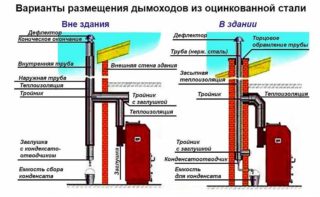 The pipe for the furnace in the bathhouse during the heating process is very hot, this must be taken into account in the design process. On the one hand, this is good, since the heating of working and auxiliary rooms is carried out. On the other hand, there is a risk of fire. The risk of gaps in the chimney through which carbon monoxide will escape cannot be ruled out. The choice of installation method is made based on the design of the bath and the assessment of possible risks.
The pipe for the furnace in the bathhouse during the heating process is very hot, this must be taken into account in the design process. On the one hand, this is good, since the heating of working and auxiliary rooms is carried out. On the other hand, there is a risk of fire. The risk of gaps in the chimney through which carbon monoxide will escape cannot be ruled out. The choice of installation method is made based on the design of the bath and the assessment of possible risks.
Internal location
The whole structure is located strictly upright. The pipe is fastened to the side pipe of the boiler or directly to the upper part of its body. The assembly of the chimney is carried out in accordance with the technology inherent in the selected material. It is better to fold the brick pipe with a square section to facilitate the work and cleaning of the channel. Metal links should be installed from the bottom up, gradually increasing the design. Joints are treated with heat-resistant sealant and closed with flat clamps. The upper part of the pipe is carried out at least 50 cm above the ridge or 100 cm of the flat roof.
Advantages of an internal lining:
- ease of installation;
- the absence of angles, which contributes to good traction and a decrease in the number of deposits;
- convenience of cleaning the polluted channel;
- additional heating of the room and attic;
- less condensation after the end of the furnace.
To make a pipe in the bath, it is necessary to violate the integrity of the ceiling and roofing. Arranging the correct passage through the floors requires additional time and money. A very hot pipe is a fire hazard. It is necessary to take measures to insulate the chimney.
External location
This decision is made when the boiler is in close proximity to the external load-bearing wall, the area of the room is limited. The starting element is connected to the boiler outlet pipe and is led out through a hole in the wall. Next, the smoke enters a vertical pipe or in a box, laid out of bricks on the wall.The second option is more time-consuming and costly, but allows you to use thermal energy to heat the room. When channeling out, it is necessary to avoid right angles along its length. Such sites reduce traction and are places of accumulation of soot, dust and debris. The problem is solved by using a bend in which a condensate collector is provided.
Advantages of outdoor technology:
- the integrity of the floors, the absence of potential leaks;
- saving free space inside the bath;
- simplicity and speed of installation;
- fire safety, as the chimney does not come into contact with combustible materials and surfaces;
- ease of maintenance and repair.
Disadvantages of the external design are also available. The main one is the formation of condensate during heating and cooling. When making such a pipe in the bathhouse with your own hands, you need to take care of its insulation or use a sandwich section. The second minus is that there is no possibility of the full use of the released heat energy, which leaves the room outside. This leads to increased fuel consumption.
Chimney passage through floors
Before installing the internal chimney, it is necessary to calculate the direction of its passage in order to avoid sticking into the rafters. If this is impossible for any reason, it is necessary to use contours, but it is better to immediately choose a place for the boiler in order to put the chimney strictly vertically.
The passage through the floors is done in the following sequence:
- In the ceiling, a square hole is drilled with a side 20 cm larger than the pipe section.
- A similar hole is made in the roofing. The wooden structures next to it are protected by mineral wool.
- From the asbestos cement sheet, 2 squares are cut with sides 10 cm larger than the holes previously made. They are fixed on the base using self-tapping screws or heat-resistant glue.
- Through the lining is a chimney.
- The remaining cracks are sealed with heat-resistant sealant.
- An elastic element is mounted on the pipe over the roof. He is pressed to the chimney with a plastic screed, and to the roofing with waterproof glue.
In conclusion, a cap is attached to the pipe head to prevent water, debris, birds and insects from entering the channel.
